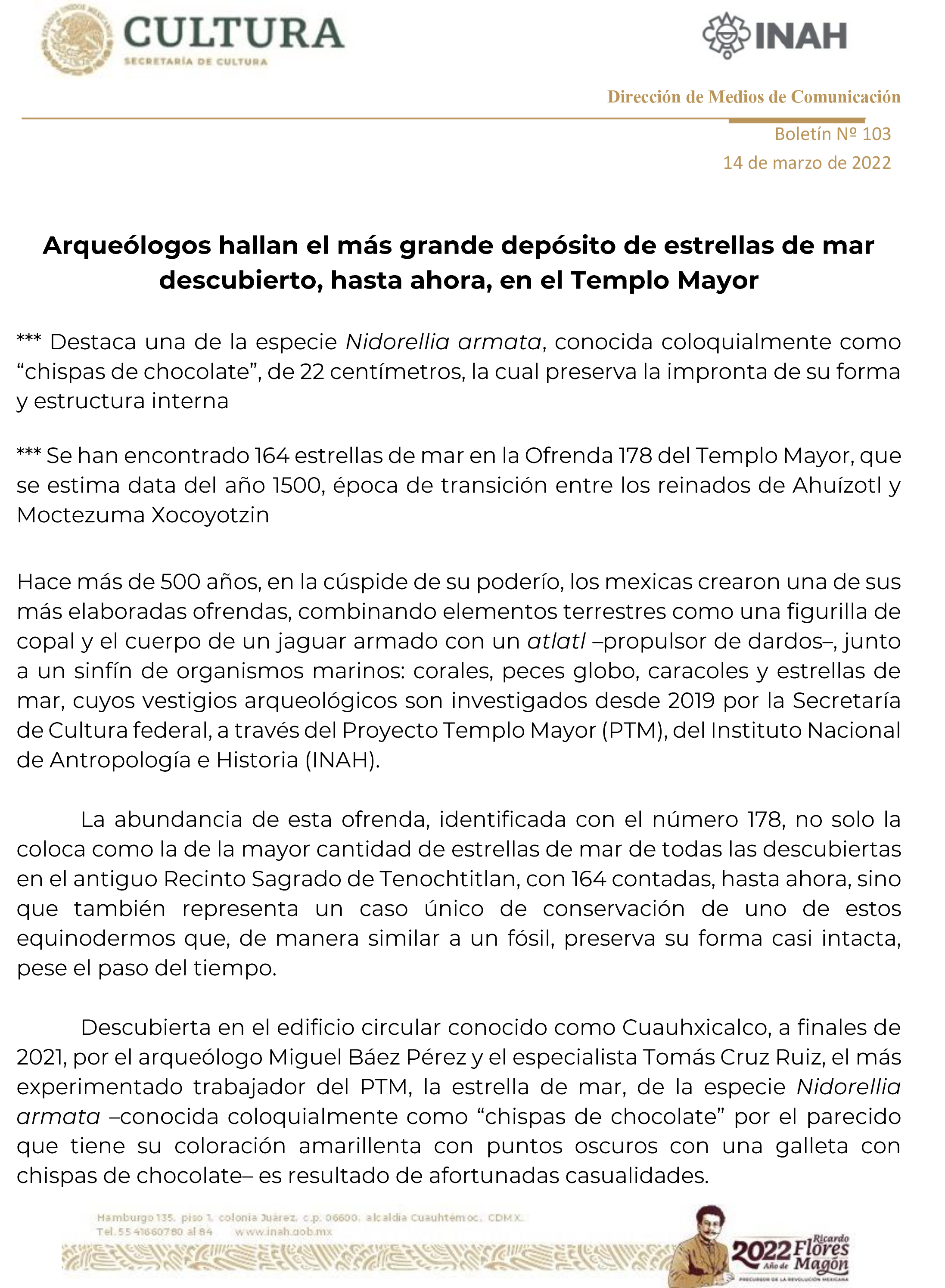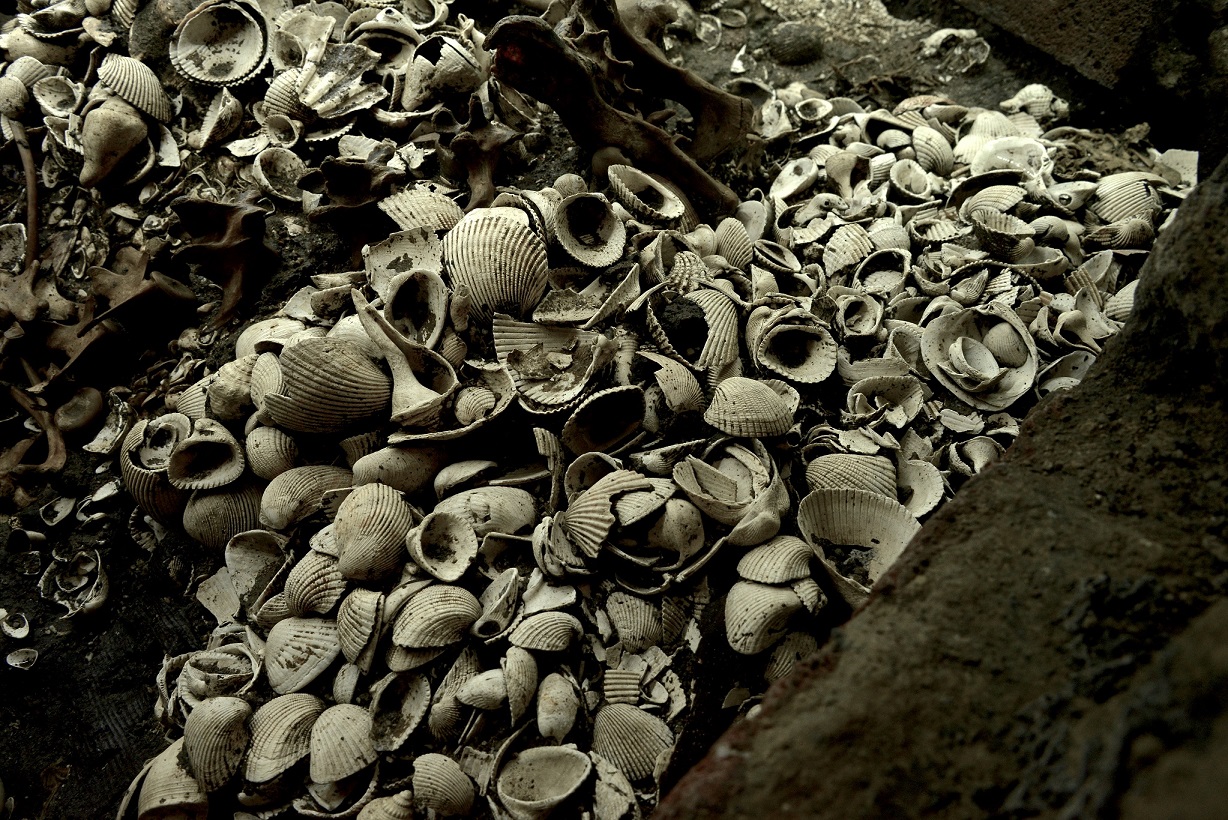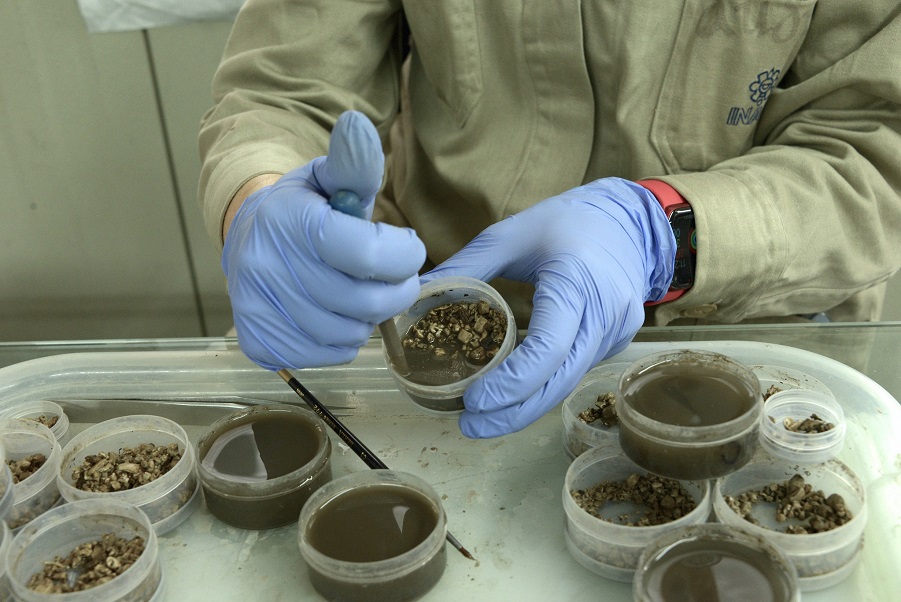
The National Institute of Anthropology and History (INAH) reported that one of the largest deposits of starfish was found in the Templo Mayor. According to the report, “164 starfish have been identified in Offering 178, which is estimated to date from 1500, a time of transition between the reigns of Ahuizotl and Moctezuma Xocoyotzin”.
The INAH released the finding in a statement issued on March 14, 2022. It is shared that one of the species that stands out most is the “Nidorellia armata, colloquially known as “chocolate chips”, 22 centimeters, which preserves the imprint of its shape and internal structure”.
As explained, the events date back more than 500 years ago, when the Mexicas were at the height of their power, which is why the Aztecs created one of their most elaborate offerings “by combining terrestrial elements such as a copal figurine and the body of a jaguar armed with an atlatl — the propeller of darts —, along with countless marine organisms.”

Among these objects are corals, puffer fish, snails and starfish, “whose archaeological remains have been investigated since 2019 by the federal Secretariat of Culture, through the INAH Templo Mayor Project”.
It is also emphasized that the abundance of the aforementioned elements places it as “the offering with the greatest number of starfish of all those discovered in the ancient Sacred Enclosure of Tenochtitlan”. So far, there have been a total of 164 that represent a unique case of “conservation of one of these echinoderms that, similar to a fossil, preserves its almost intact form, despite the passage of time”.
This is a discovery made by archaeologist Miguel Báez Pérez and specialist Tomás Cruz Ruiz, who made the discovery in the circular building known as Cuauhxicalco, at the end of 2021. It should be noted that the species Nidorellia armata is popularly known as “chocolate chips” due to the “resemblance of its yellowish coloration with dark spots to a chocolate chip cookie”.

It is said that the conservation of this marine organism is due to the fact that it was perhaps “one of the first stars that the Mexica priests placed in the offering, so when it received the weight of the jaguar and all the elements it sank into what is believed to be a layer of fiber beneath it”, which caused the preservation of its internal structure and its 22 centimeters long between its tips.
This discovery is rare since the “remains of the other 163 stars are scattered, due to the natural loss of their organic matter”. On the other hand, in the studies carried out, it has been possible to deduce that the offering is “around the year 1500, the time of transition between the reigns of Ahuizotl and Moctezuma Xocoyotzin”.
It is also noted that corals were brought from the Gulf of Mexico, “starfish from the Pacific Ocean, and a female jaguar that may have come from distant regions such as Soconusco, a territory located between what is now Chiapas and Guatemala.” This was made possible by the fact that during the reign of Ahuizotl the Mexicas established new trade routes that allowed them to expand their military presence to different parts of Mexican territory.

INAH researchers emphasize that “the offering is related to the war, not only because of the atlatl that carried the jaguar in a claw, but because of the location in Cuauhxicalco, a building aligned with the south side of the Main Temple, dedicated to Huitzilopochtli, god of war”.
In addition, Baez Pérez explains that the worldview of the Mexicas related starfish and jaguars to the night sky and the night, in the same way this feline was an image associated with the god Tezcatlipoca.
The archaeologist also adds that: “A good part of the Mesoamerican peoples believed that the origin of the world was linked to the sea, therefore, marine organisms were treated as relics. In the case of the Mexicas, their military power allowed them to bring thousands of marine objects and recreate an entire aquatic environment in Tenochtitlan itself.”
The communiqué shares that research is still being done on the subject. At the moment, specialists have dedicated themselves to collecting, cleaning and storing the remains found “in small plastic godets to take them to the laboratory”, where they will receive initial conservation treatments.

The work is being carried out with the support of specialists from the Institute of Marine Sciences and Limnology, of the National Autonomous University of Mexico (UNAM), “in order to specify data such as the identification of species, the age of individuals or their growth stages”.
This situation represents a great opportunity to study the evolution of the stars found, since “at present echinoderms have reduced their size, both by human exploitation and by global warming; while in the ancient capital of Tenochca, stars have been found that reached up to 60 centimetres long between tip and tip”.
KEEP READING:
Últimas Noticias
Debanhi Escobar: they secured the motel where she was found lifeless in a cistern

The oldest person in the world died at the age of 119

Macabre find in CDMX: they left a body bagged and tied in a taxi
The eagles of America will face Manchester City in a duel of legends. Here are the details

Why is it good to bring dogs out to know the world when they are puppies



